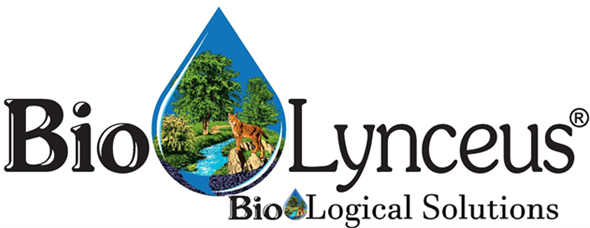Operators of animal, industrial and municipal wastewater systems have often been surprised with the increase of dissolved oxygen in wastewater where BioLynceus products have been applied with reported odor and sludge reduction. In noting the increase in biological activity in wastewater, it has been difficult to understand how increased biological demand can exist with a higher level of dissolved oxygen than before applying BioLynceus® products.
A suggested scientific explanation of this phenomenon is that the photosynthetic microbes are producing oxygen at a faster rate than oxygen-consuming microbes require. This increased dissolved oxygen speeds up the biooxidation process causing a reduction of an anaerobic gasses while the biosolids go through the “wet burn”. This reduces the carbonaceous material to odorless carbon dioxide gas that escapes from the wastewater while liquefying biosolids volume.
A possible explanation for this is found in the February 1990 issue of Scientific American in an article entitled, “How Plants Make Oxygen.” Scientist William J. Coleman described a biochemical mechanism they depict as a water oxidating clock that enables some bacteria and algae to exploit solar energy by splitting water molecules into oxygen gas, protons and electrons.
This comprehensive article describes the pathway which living systems such as microbes provide for oxygen production through respiration. Other possibilities are that the lagoon biological systems have adjusted to use terminal electron acceptors other than oxygen.
Virtually all of the objectionable gasses from wastewater are sulfur-based and produced by anaerobic microbes. The introduction of BioLynceus® products enhance the aerobic microbes causing an increased oxygenation that causes a “wet burn” of sludge. The increased oxygen disrupts the anaerobic biological pathways reducing the anaerobic metabolism that products objectionable odors.
Most lagoons have three overlapping zones. At the surface of most heavily organically loaded lagoons is an aerobic layer. Aerobic microbes require free oxygen for effective metabolism. Because of organic load in most lagoons, this layer is very thin. Below the aerobic layer, there is a facultative layer. Facultative microbes are able to function with atmospheric oxygen or in the absence of atmospheric oxygen. At the lower lever lagoons, the anaerobic layer exists.
The anaerobic microbes are not as efficient as aerobic microbes and require significantly more energy. Anaerobic and facultative microbes produce a host of anaerobic compounds such as hydrogen sulfide, formaldehyde and mercaptans that create significant odor problems in wastewater treatment. An example is that hydrogen sulfide gas (H2S) is produced at the lower anaerobic layer along with other anaerobic gases that emanate from the lagoon and drift to neighbors, causing public complaints.
As BioLynceus® products enhance the aerobic layer, the anaerobic gasses that pass through the aerobic layer are oxidized with a significant reduction of noxious odors.
